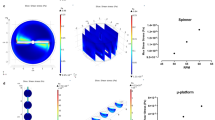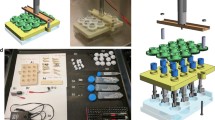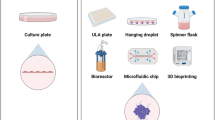Abstract
Therapeutic breakthroughs in neurological disorders have been hampered by the lack of accurate central nervous system (CNS) models. The development of these models allows the study of the disease onset/progression mechanisms and the preclinical evaluation of new therapeutics. This has traditionally relied on genetically engineered animal models that often diverge considerably from the human phenotype (developmental, anatomic, and physiological) and 2D in vitro cell models, which fail to recapitulate the characteristics of the target tissue (cell–cell and cell–matrix interactions, cell polarity, etc.). Recapitulation of CNS phenotypic and functional features in vitro requires the implementation of advanced culture strategies, such as 3D culture systems, which enable to mimic the in vivo structural and molecular complexity. Models based on differentiation of human neural stem cells (hNSC) in 3D cultures have great potential as complementary tools in preclinical research, bridging the gap between human clinical studies and animal models. The development of robust and scalable processes for the 3D differentiation of hNSC can improve the accuracy of early stage development in preclinical research. In this context, the use of software-controlled stirred-tank bioreactors (STB) provides an efficient technological platform for hNSC aggregation and differentiation. This system enables to monitor and control important physicochemical parameters for hNSC culture, such as dissolved oxygen. Importantly, the adoption of a perfusion operation mode allows a stable flow of nutrients and differentiation/neurotrophic factors, while clearing the toxic by-products. This contributes to a setting closer to the physiological, by mimicking the in vivo microenvironment. In this chapter, we address the technical requirements and procedures for the implementation of 3D differentiation strategies of hNSC, by operating STB under perfusion mode for long-term cultures. This strategy is suitable for the generation of human 3D neural in vitro models, which can be used to feed high-throughput screening platforms, contributing to expand the available in vitro tools for drug screening and toxicological studies.
Access this chapter
Tax calculation will be finalised at checkout
Purchases are for personal use only
Similar content being viewed by others
References
Casarosa S, Zasso J, Conti L (2013) Systems for ex-vivo Isolation and culturing of neural stem cells. In: Bonfanti L. (ed) Neural stem cells – New perspectives. InTech. pp 3–28
Schüle B, Pera RA, Langston JW (2009) Can cellular models revolutionize drug discovery in Parkinson’s disease? Biochim Biophys Acta 1792:1043–1051
Schwarz SC, Schwarz J (2010) Translation of stem cell therapy for neurological diseases. Transl Res 156:155–160
Storch A, Paul G, Csete M et al (2001) Long-term proliferation and dopaminergic differentiation of human mesencephalic neural precursor cells. Exp Neurol 170:317–325
Schaarschmidt G, Schewtschik S, Kraft R et al (2009) A new culturing strategy improves functional neuronal development of human neural progenitor cells. J Neurochem 109:238–247
Brito C, Simão D, Costa I et al (2012) 3D cultures of human neural progenitor cells: dopaminergic differentiation and genetic modification. Methods 56:452–460
Simão D, Pinto C, Piersanti S et al (2015) Modeling human neural functionality in vitro: three-dimensional culture for dopaminergic differentiation. Tissue Eng A 21:654–668
Zeng X, Hunsberger JG, Simenov A et al (2014) Concise review: modeling central nervous system diseases using induced pluripotent stem cells. Stem Cells Transl Med 3:1412–1428
Gage FH (2000) Mammalian neural stem cells. Science 287:1433–1438
Breslin S, O’Driscoll L (2013) Three-dimensional cell culture: the missing link in drug discovery. Drug Discov Today 18:240–249
Pampaloni F, Reynaud EG, Stelzer EHK (2007) The third dimension bridges the gap between cell culture and live tissue. Nat Rev Mol Cell Biol 8:839–845
Hopkins AM, DeSimone E, Chwalek K et al (2015) 3D in vitro modeling of the central nervous system. Prog Neurobiol 125:1–25
Terrasso AP, Pinto C, Serra M et al (2015) Novel scalable 3D cell based model for in vitro neurotoxicity testing: combining human differentiated neurospheres with gene expression and functional endpoints. J Biotechnol 205:82–92
Paşca AM, Sloan SA, Clarke LE et al (2015) Functional cortical neurons and astrocytes from human pluripotent stem cells in 3D culture. Nat Methods 12:671–678
Mariani J, Simonini MV, Palejev D et al (2012) Modeling human cortical development in vitro using induced pluripotent stem cells. Proc Natl Acad Sci U S A 109:12770–12775
Kinney MA, Sargent CY, McDevitt TC (2011) The multiparametric effects of hydrodynamic environments on stem cell culture. Tissue Eng Part B Rev 17:249–262
Serra M, Brito C, Costa EM et al (2009) Integrating human stem cell expansion and neuronal differentiation in bioreactors. BMC Biotechnol 9:82
Rodrigues CA, Fernandes TG, Diogo MM et al (2011) Stem cell cultivation in bioreactors. Biotechnol Adv 29:815–829
Baghbaderani BA, Mukhida K, Sen A et al (2010) Bioreactor expansion of human neural precursor cells in serum-free media retains neurogenic potential. Biotechnol Bioeng 105:823–833
Serra M, Brito C, Sousa MFQ et al (2010) Improving expansion of pluripotent human embryonic stem cells in perfused bioreactors through oxygen control. J Biotechnol 148:208–215
Li Z, Cui Z (2014) Three-dimensional perfused cell culture. Biotechnol Adv 32:243–254
Serra M, Brito C, Correia C et al (2012) Process engineering of human pluripotent stem cells for clinical application. Trends Biotechnol 30:350–359
Androutsellis-Theotokis A, Murase S, Boyd JD et al (2008) Generating neurons from stem cells. In: Weiner LP (ed) Neural stem cells. Humana, New York, pp 31–38
Kriks S, Shim J-W, Piao J et al (2011) Dopamine neurons derived from human ES cells efficiently engraft in animal models of Parkinson’s disease. Nature 480:547–551
Reynolds BA, Weiss S (1996) Clonal and population analyses demonstrate that an EGF-responsive mammalian embryonic CNS precursor is a stem cell. Dev Biol 175:1–13
Reynolds BA, Tetzlaff W, Weiss S (1992) A multipotent EGF-responsive striatal embryonic progenitor cell produces neurons and astrocytes. J Neurosci 12:4565–4574
Schneider CA, Rasband WS, Eliceiri KW (2012) NIH Image to ImageJ: 25 years of image analysis. Nat Methods 9:671–675
Acknowledgements
We gratefully acknowledge Dr Johannes Schwarz for the supply of hmNPC within the scope of the EU project BrainCAV (FP7-222992) and Dr Tomo Saric and Dr Eric J. Kremer for the supply of hiPSC-NSC lines. The authors also acknowledge João Clemente for the implementation and support on the perfusion operation mode in the bioreactors. This work was supported by: Brainvectors (FP7-286071), funded by the EU and PTDC/EBB-BIO/119243/2010, funded by Fundação para a Ciência e Tecnologia (FCT), Portugal. “iNOVA4Health—UID/Multi/04462/2013”, a program financially supported by FCT / Ministério da Educação e Ciência, through national funds and cofunded by FEDER under the PT2020 Partnership Agreement is also acknowledged. DS, APT, and CP were recipients of a PhD fellowship from FCT, Portugal (SFRH/BD/78308/2011, PD/BD/52473/2014, and PD/BD/52202/2013, respectively).
Author information
Authors and Affiliations
Corresponding authors
Editor information
Editors and Affiliations
Rights and permissions
Copyright information
© 2016 Springer Science+Business Media New York
About this protocol
Cite this protocol
Simão, D. et al. (2016). Perfusion Stirred-Tank Bioreactors for 3D Differentiation of Human Neural Stem Cells. In: Turksen, K. (eds) Bioreactors in Stem Cell Biology. Methods in Molecular Biology, vol 1502. Humana Press, New York, NY. https://doi.org/10.1007/7651_2016_333
Download citation
DOI: https://doi.org/10.1007/7651_2016_333
Published:
Publisher Name: Humana Press, New York, NY
Print ISBN: 978-1-4939-6476-5
Online ISBN: 978-1-4939-6478-9
eBook Packages: Springer Protocols




